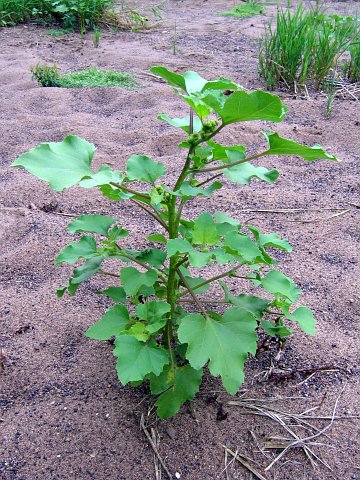
Every time you plant your feet upon the snow you press down thousands of seeds, minute forms of life, each with its little store of starch or albumen, carefully compounded in Nature’s laboratory, sufficient to sustain the embryonic life until the tiny plantlet learns to draw nourishment from the breast of Mother Earth and to breathe health and vigor from the sunshine and the air. By the wayside, in stony places, among thorns and on good ground, Nature sows her seeds with lavish hand. Every tree and shrub and herb, itself held fast to one place, tries to give its offspring as great a start in the world as possible. Even in late February one may see some of Nature’s airships, designed to carry seeds. They are all built on the same principle, not to rise in the air, but to fly as far away from the tree as possible when falling from the branch. The basswood puts its seeds into little hollow wooden balls, then makes a sail out of a leaf and sets it at just the right angle to balance the seeds and catch the breeze. The winged samaras of the ash and the box elder are other modifications of the same principle. The round balls of the sycamore hang till the high winds of March loosen their strong stalks and then they break open and the club-shaped nutlets inside spread their bristly hairs to the breeze. The hop-like strobiles of the hop hornbeam seem especially made to blow over the surface of the frozen snow; they drop off the queer little oblong bags as they go and thus the smooth small nuts inside are planted. The oaks, hickories, walnuts, butternuts, hazelnuts, trust their fruits to the feet of passersby and to the squirrels and blue jays which fail to find many of their buried acorns and nuts. The big three-valved balloons of the bladdernut can sail either in the air, on the water, or over the frozen snow. The pretty clusters of the wild yam, seen climbing over the hazelbrush in the rich winter woods, have two ways of navigating in the wind; either the three-sided, papery capsule floats as a whole, or it splits through the winged angles and then the flat seeds with their membranaceous wings have a chance to flutter a foot or two away where haply they may find a square inch of unoccupied soil. The desmodium, the bidens, the agrimony and the cocklebur, which stick to your clothes even as late as February, are only using you as a Moses to lead their children to their promised land. These herb stalks above the snow, the corymbose heads of the yarrow, the spikes of the self-heal, the crosiers of the golden-rod, the panicles of the asters, the racemes of the Indian tobacco, the knotted threads of the blue vervain and the plantain, the miniature mandarin temples of the peppergrass — all these have shed, or are shedding, myriads of seeds to be silently sepulchred under the snow until earth’s easter April mornings. The withered berries of the bittersweet, the cat-brier, and the sumac, like the drupes of the early fall, are scattered far and wide by the birds. All these speak not of death, but of an eager, expectant life.
– Frederick John Lazell, Some Winter Days in Iowa (1907)